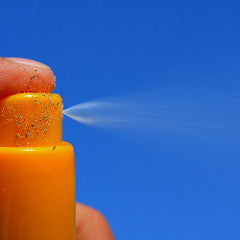Spotlight on Sun Protection Products
July 07, 2007 2 min read

Problem: Many of the chemicals in sunscreens exhibit hormonal (estrogen-like) activity and have been linked to reproductive cancers in rats. Children and pregnant women are especially vulnerable to hormone disrupting agents. I do not recommend the use of any chemical for sunscreen protection.
Action: Check the Active Ingredients list on your sun protection products. The best and safest ingredients are Titanium Dioxide or Zinc Oxide.
Solution: Buy sunblock with titanium dioxide or zinc oxide. Avoid iron oxide. Steer clear of products that are not explicit as to whether or not they use nanoparticle size minerals. The size should be micronized (one micron = 1000 nanoparticles). Nanoparticles are so small that studies have shown that they can cross through the skin and into the blood stream.
Useful Definitions:
Sun Protection Factor (SPF):
If your skin normally burns in 10 minutes an SPF 15 will give you 15 times longer before burning or 150 minutes. The SPF only pertains to one ultraviolet ray – UVB. Early sunscreen products only screened UVB rays allowing the UVA rays to penetrate through unobstructed, for hours in some cases. UVA rays used to be considered the safe ray but in recent years UVA rays have been associated with multiple forms of skin cancer and deep wrinkling of the skin.
Sunscreen – Chemically Based:
The primary action is absorption of UVB and UVA rays. Often multiple chemicals are used to achieve full-spectrum protection.
Sunblock – Mineral Based:
The primary action is blocking UVB and UVA before entering the body. The action is that of a physical block. By nature minerals (zinc and titanium), provide full-spectrum protection.
Full Spectrum Protection:
Sunscreens or Sunblocks that absorb or block both UVB and UVA ultraviolet rays.
FULL SPECTRUM PROTECTION – MINERALS WIN HANDS DOWN!!!
Titanium and zinc have always offered full-spectrum protection. To achieve full spectrum protection most chemical sunscreens contain multiple chemicals to screen UVB and UVA.
Subscribe
Sign up to get the latest on sales, new releases and more …

